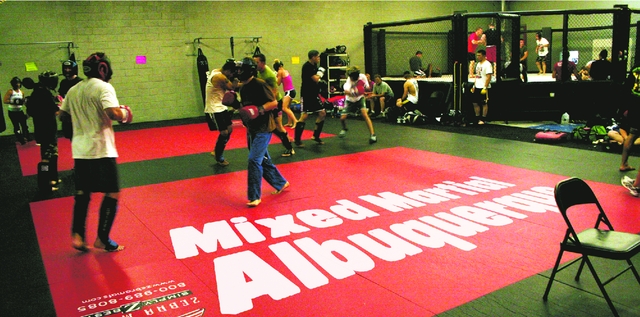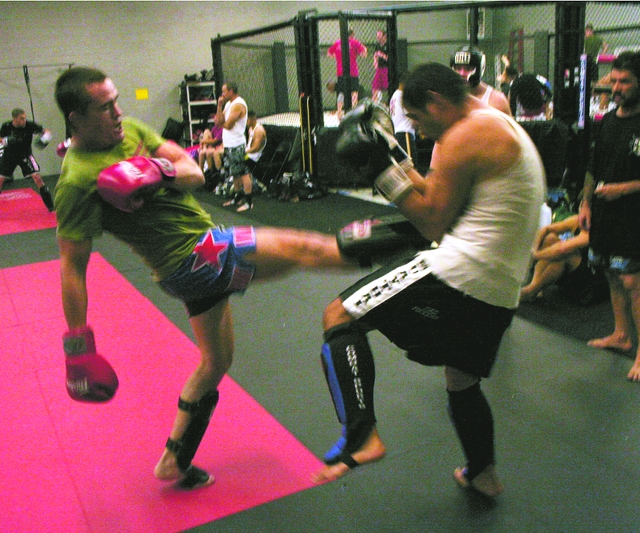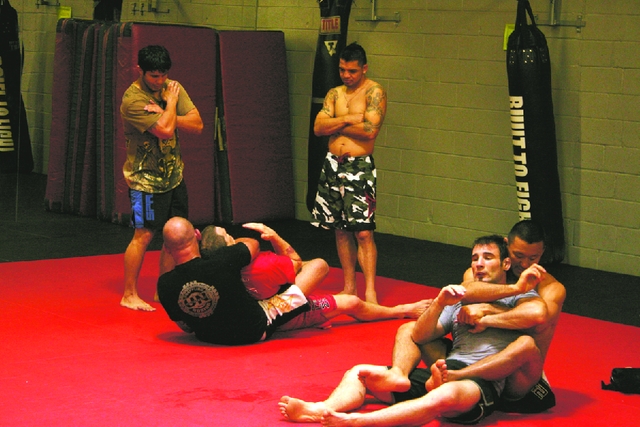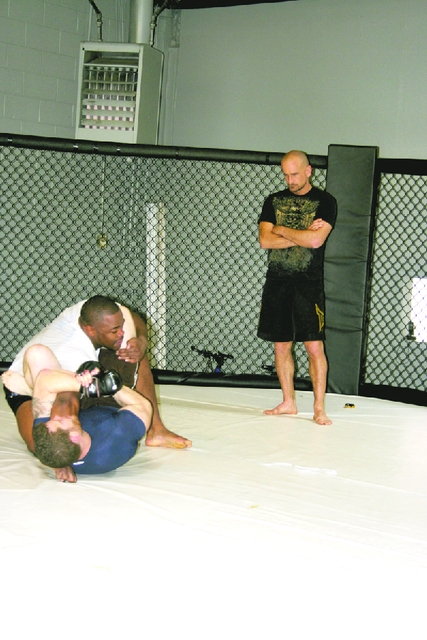Mixed Martial Albuquerque
Jackson’s Mma Gym Makes Albuquerque An Unlikely Stronghold For Elite Cage Fighting


Kyle Noke, a former Australian MMA champ, delivers a kick.
Ari LeVaux

(Bottom left) Greg Jackson demonstrates a choke on Derek Begley while Joe Stevenson and Leonard Garcia look on. Yoshiyuki Yoshida (bottom right) practices the move on Isaac Vallie Flagg.
Ari LeVaux

Georges St-Pierre works for an “arm bar” on Rashad Evans.
Ari LeVaux

Greg Jackson studies Nate Marquardt and Rashad Evans.
Ari LeVaux








